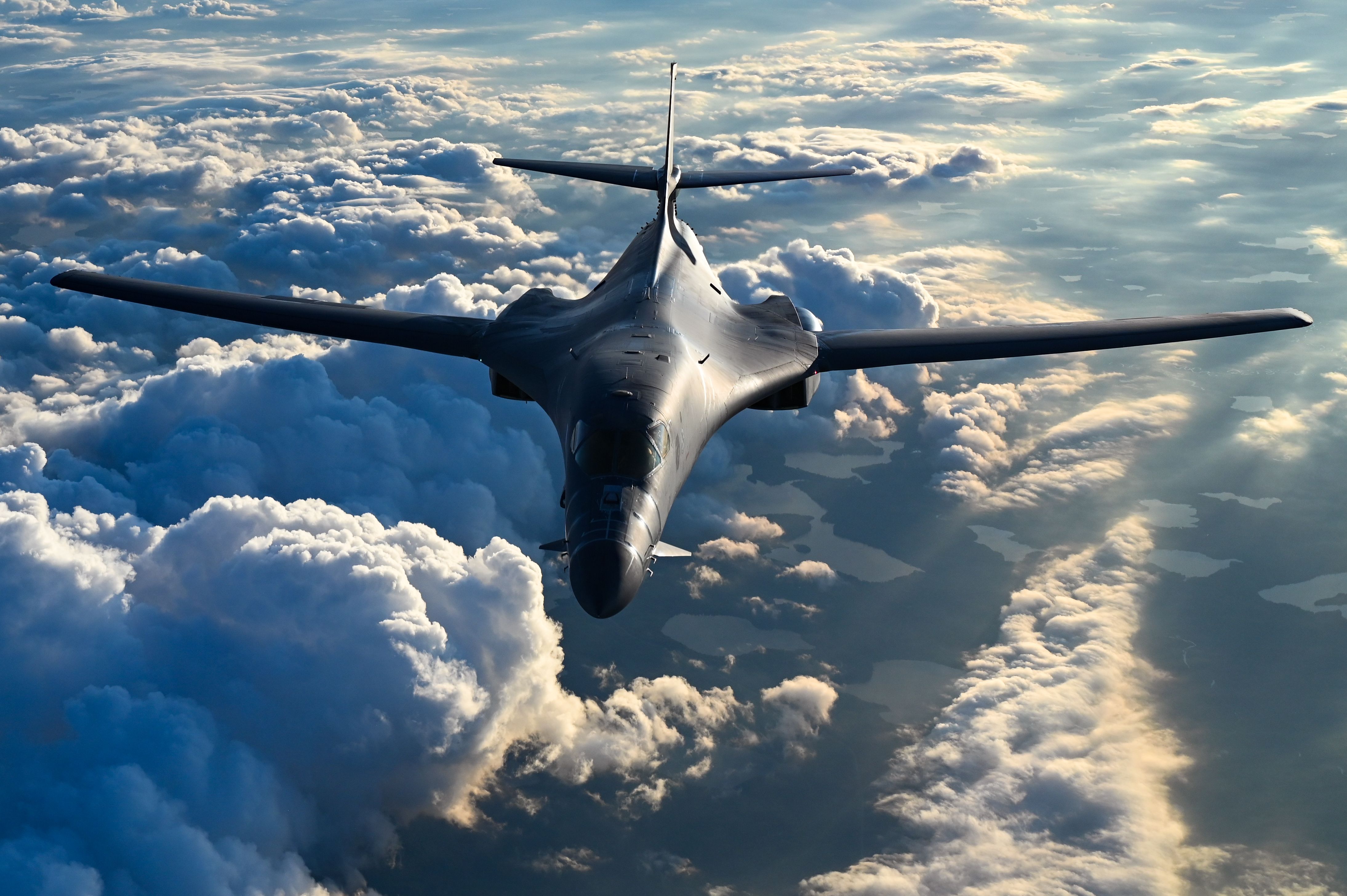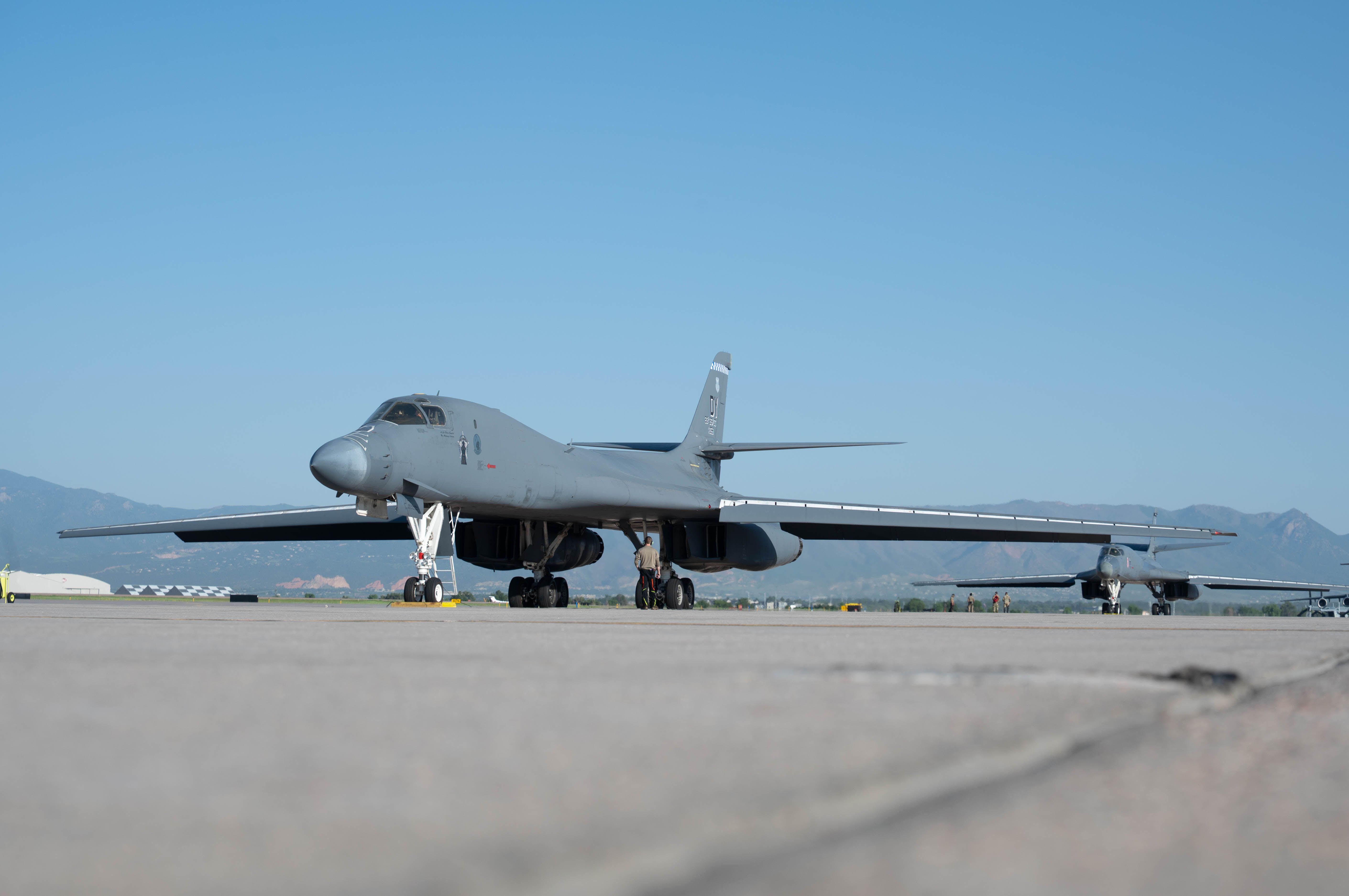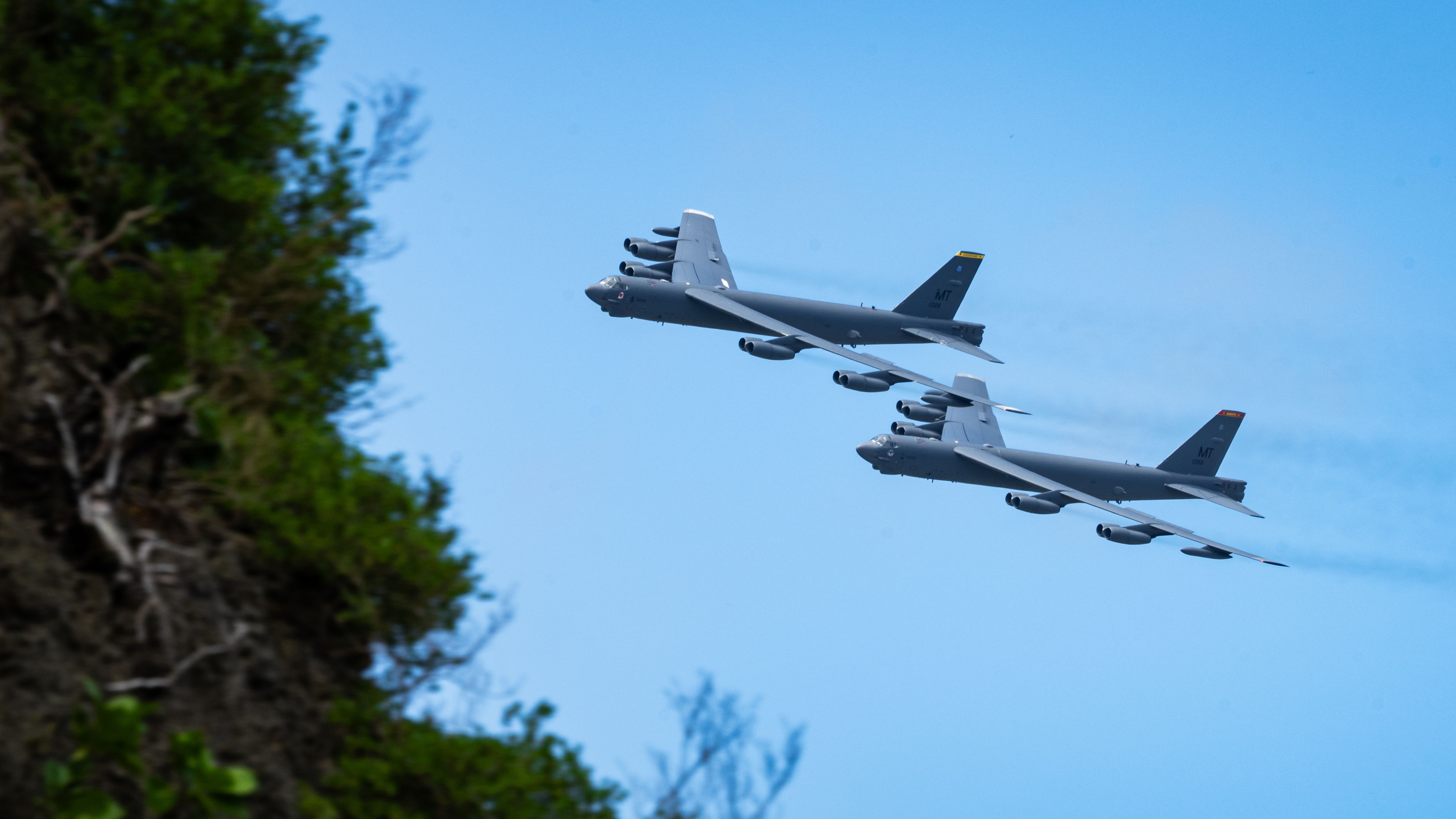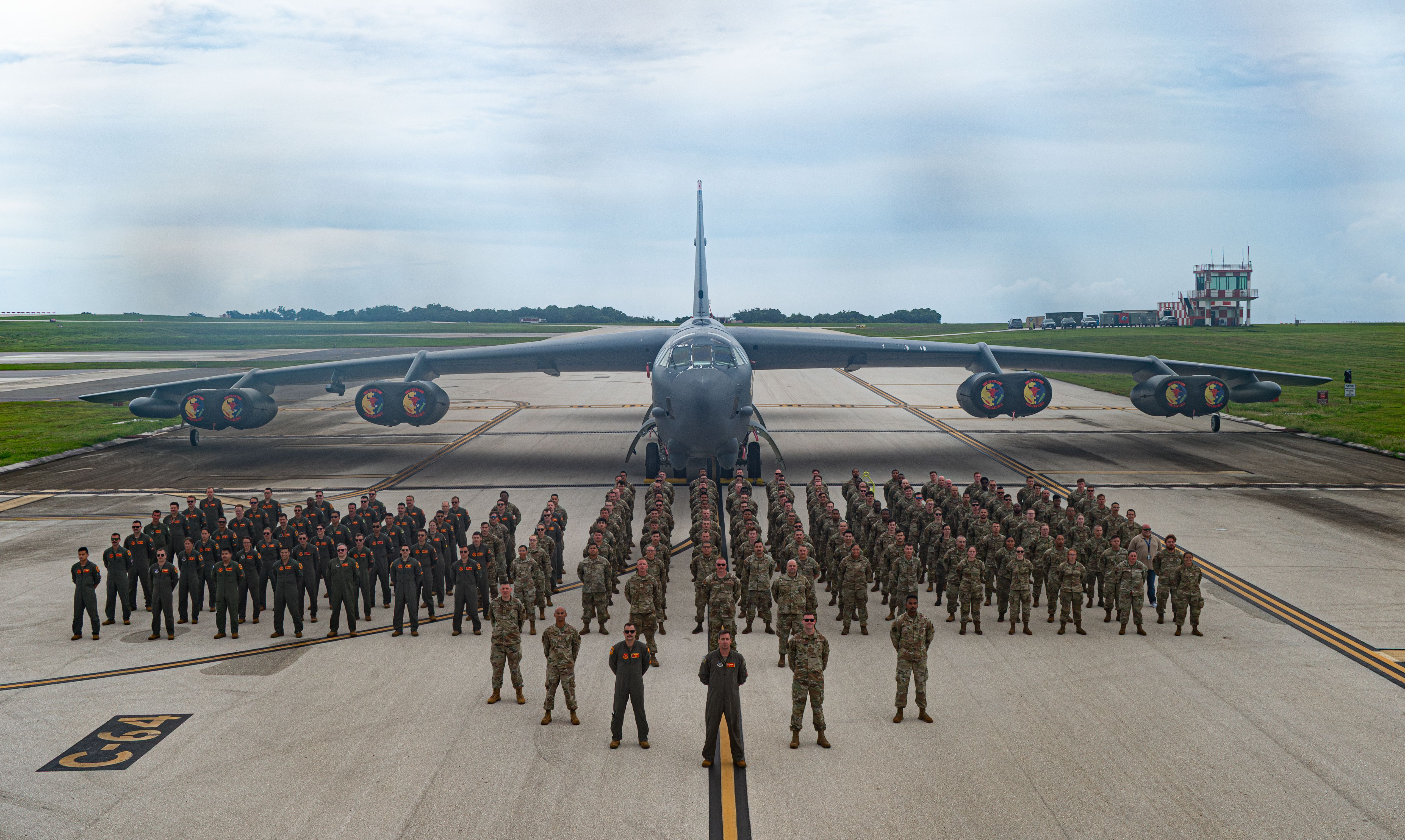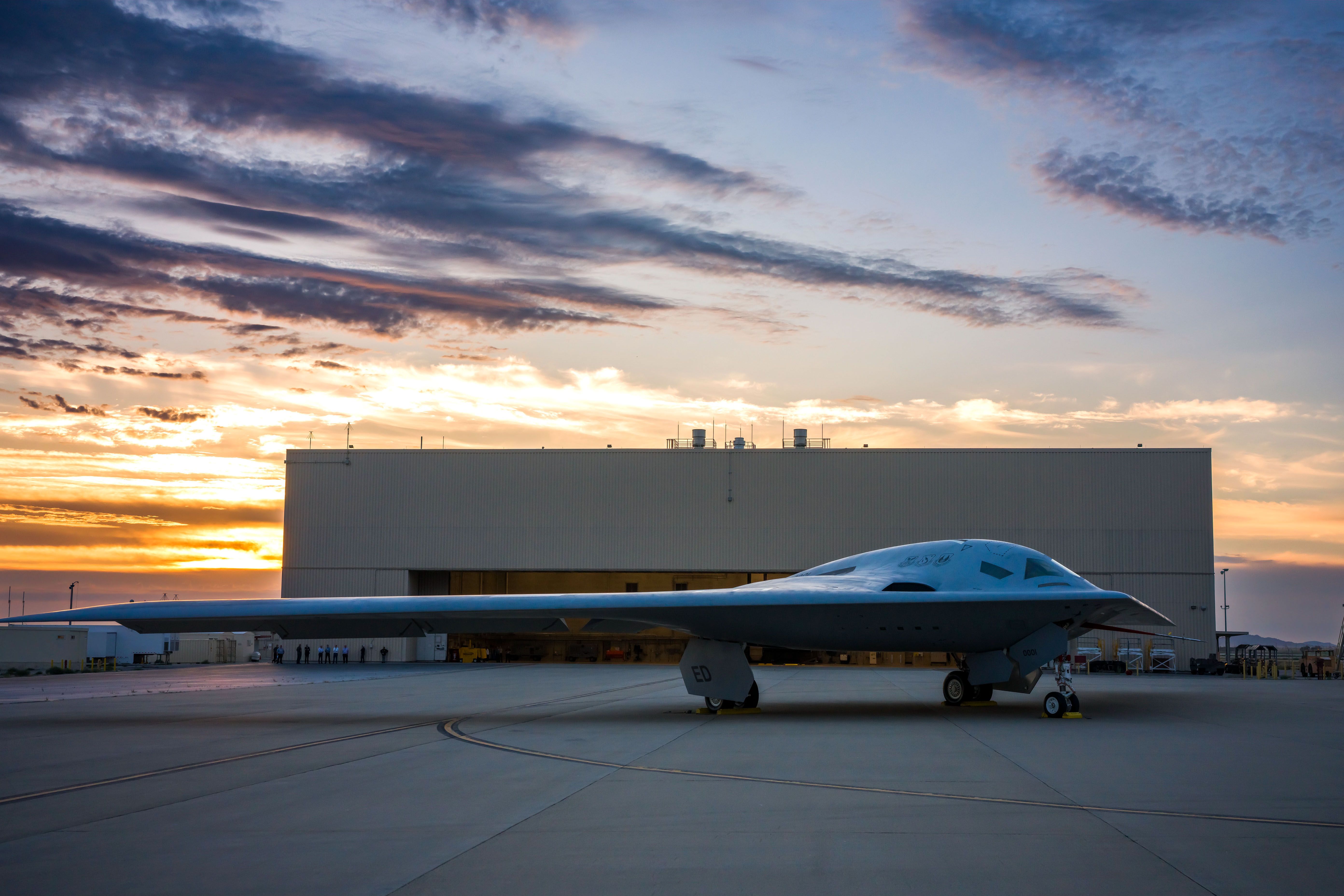At present, only the upcoming Northrop Grumman B-21 Raider has an active assembly line of all the American heavy bombers, expected to make about seven stealth flying wings a year. The Air Force Global Strike Command (AFGSC) patrols high above the world’s conflict zones.
The United States Air Force relies on AFGSC to maintain constant vigilance and readiness. Prepared to strike, or not strike, anywhere in the world thanks to the massive B-52 Stratofortress, supersonic B-1 Lancer, and stealth B-2 Spirit. Perhaps surprisingly, none of these legacy platforms are in production today.
Only One Model Is Currently Under Assembly
The upcoming B-21 Raider is the only American bomber that currently has an assembly line up and running. While the debut of the B-21 promises deeper penetration and higher survivability against tomorrow’s air defenses, upgraded B-52s, B-1B, and B-2s will still serve for decades to come. USAF Major General Jason Armagost, 8th Air Force and Joint-Global Strike Operations Center commander, commented on the 2024 deployments by squadrons of the AFGSC:
“On any given day, we’re actively engaged through bomber task force missions. In fact, about 60 percent of the year we are deployed to a theater or providing continental US (CONUS) -to-CONUS flights in support of theaters or in support of US Strategic Command and the Chairman of Joint Chiefs of Staff.”
Manned bombers provide a level of versatility that no missiles or drones can equal, and they have the soft power to change a situation simply through a force demonstration. That is, of course, thanks to the awesome firepower they wield when duty calls.
The B-2 Spirit: Production Complete
The USAF is the sole operator of the first fifth-generation heavy bomber ever made: the Northrop Grumman B-2 Spirit. The flying wing remains shrouded in secrecy because of the long list of revolutionary technologies that were invented during its development, and the official USAF webpage lists just 21 Spirits delivered before the factory line shut down in 1997.
Following one crash in Guam and another being written off after a mishap at Whiteman Air Force Base (AFB), a total of 19 remain in service today. As the bombers have to undergo depot maintenance, the available number drops again. The production was famously cut short when the Soviet Union collapsed and the Cold War came to an abrupt end.
The short production run raised the price tag of each one of the incredible jets to balloon to astronomical amounts in excess of $1 billion by 1998. In the global landscape of air warfare in 2025, potential competitors are emerging from near-peer rivals, yet the B-2 Spirit remains an unequaled force of striking power that can reach any corner of the globe with impunity.
The B-1 Lancer: Production Complete
The final B-1 was delivered in 1988, and, upon its debut, the type claimed almost 50 world records for speed, payload, range, and time of climb in its class according to the USAF. The National Aeronautic Association recognized the B-1 for achieving one of the 10 most distinguished record flights in 1994, with the most recent record made official in 2004. The B-1’s afterburning turbofan engines, swing-wing design, and blended wing-body configuration increase its survivability.
These aspects also provide the aircraft with tremendous speed, agility, and extended range. When taking off, landing, aerial refueling, and in some situations involving the use of high-altitude weaponry, the wings are oriented forward. Colonel Glenn Spears, 28th Operations Group commander at Ellsworth AFB, explained that crew training emphasizes “defensive maneuvers and advanced handling of the aircraft,” which is not limited to low-level flight:
“The B-1B wings train our crews to use the full safe envelope of the aircraft’s capabilities. There’s no doubt that it’s a bomber, but it’s a very maneuverable bomber. If we simulate that a threat has come up, (…) we practice evading the threat and altering the route.”
Spears adds that, if there’s no path to “safely get my package out,” the B-1B will skip its target, and he’ll “survive to fight another day.” The B-1’s basic combat design, which has its wings swept forward, gives it exceptional mobility at low and high altitudes, making it perfect for high-subsonic and supersonic flight. Its quick handling and responsiveness make it easy to incorporate into varied striking packages.
The B-1’s large payload, sophisticated radar targeting, long loiter time, and robust battlefield survivability make it an essential component of any joint or composite strike force. During Operation Allied Force in 1999, six B-1s delivered 20% of the ammunition but flew 2% of the bombing missions. Similarly, the B-1 dropped 40% of the precision weapons and conducted 2% of missions during Operation Enduring Freedom.
The B-52 Stratofortress: Production Complete
The B-52 has seen action in more conflicts and campaigns than any other aircraft ever built, according to the Imperial War Museum. It served as a Cold War deterrent against the threat of Soviet nuclear arms, and as a low-level strike platform in Vietnam before going on to drop over 40% of all air-launched coalition munitions in Operation Desert Storm. The official USAF webpage for the Boeing B-52H Stratofortress lists 85 active airframes still in USAF inventory of the 744 that were built.
Of those 85 gigantic jet bombers, 58 are considered operational while around 10 are in depot-level maintenance at any given time, and more are in a condition of deep storage for worst-case scenarios. The mothballed but not scrapped aircraft are retained to surge the active force if a large-scale conflict were to break out and demand additional heavy bombers to be made in a short time. From 1954 to 1962, Boeing plants in Washington and Kansas crafted 744 of the B-52 series.
Arguably the two most iconic variants are the -D model of the Vietnam era and the -H that continues to fly today. The -H models are set to undergo major powerplant overhauls and system modernization to upgrade them to a new level of efficiency and capability, dubbed the -J variant. The new engines from Rolls-Royce are expected to revitalize the Stratofortress to continue service into the 2050s.
According to the AFGSC, the BUFF(‘Big Ugly Fat Fellow’) played a major role in the opening salvo of Operation Desert Storm by launching over 100 AGM-86C conventional air-launched cruise missiles in 2003. Now, the entire force is split between the 5th Bomb Wing at Minot AFB, North Dakota, and the 2nd Bomb Wing at Barksdale AFB, Louisiana, which fall under the AFGSC’s remit.
The Rolls-Royce F130 has cleared its critical design review, meaning it can enter final development, test, and production on time, as the Air & Space Forces magazine announced in December 2024. Although there may not be any more B-52s in the pipeline, the ones still in action will be better than ever after the latest series of upgrades.
The B-21 Raider: Production Upcoming
The B-21 Raider is a much-acclaimed and long-awaited successor to the B-2 Spirit, and both are products of Northrop Grumman. Air & Space Forces Magazine reports that production is ramping up, with Northrop Grumman having potentially 40 of the new stealth bombers in various states of assembly. In the 2026 fiscal year, the Air Force and Congress have proposed spending $10.3 billion on the B-21 bomber, which the military recognized will support both greater production capacity.
Based on a purchase of 100 aircraft, previous estimates have shown that B-21 deliveries might be completed by the mid-to-late 2030s. About seven are expected annually as a result of the order quantity and schedule, as it is known now. Additional B-21s may be ordered if the B-52J program is delayed or hindered. Chief of Staff General David W. Allvin was quoted by Air & Space Forces Magazine as saying in May:
“[I will] take all I can get with the funding. The 100 minimum is certainly something we can stand behind. When we look at what the maximum is, I really want to look at the risk over time, and opportunities over time.”
The B-21 In A Nutshell
Building on the B-2 Spirit’s groundbreaking technology, the B-21 will further improve the stealth characteristics of low radar observability, reduced thermal signature, and discrete electronic footprint, making it nearly impossible for any system or sensor to detect the Air Force’s first sixth-generation stealth bomber. The overlap between the technologies and specifications of an advanced drone and an advanced bomber is one of the reasons it may be a pilot-optional stealth aircraft.
The next-generation stealth bomber must have the same avionics, secure communications, sensor suite, systems redundancy, and data-networking as an unmanned aircraft. Operating autonomously or even semi-autonomously would revolutionize the strategic strike capability of the United States Air Force. The Raider itself could be flown without a pilot, or at the very least, this would lessen the load on the pilot and allow the crew to carry out a wide range of tactical duties.
The prospect that the pilots may operate cooperating aircraft from the Raider as a sort of command center is another intriguing and plausible option. The Loyal Wingman, or Collaborative Combat Aircraft, drone program has already been investigated by the US Navy and Air Force, and several ship-based and land-based prototypes have been granted funding.

- Stock Code
-
BA
- Date Founded
-
July 15, 1916
- CEO
-
Kelly Ortberg
- Headquarters Location
-
Chicago, USA
- Business Type
-
Planemaker
- Key Product Lines
-
Boeing 737, Boeing 747, Boeing 757, Boeing 767, Boeing 777, Boeing 787





